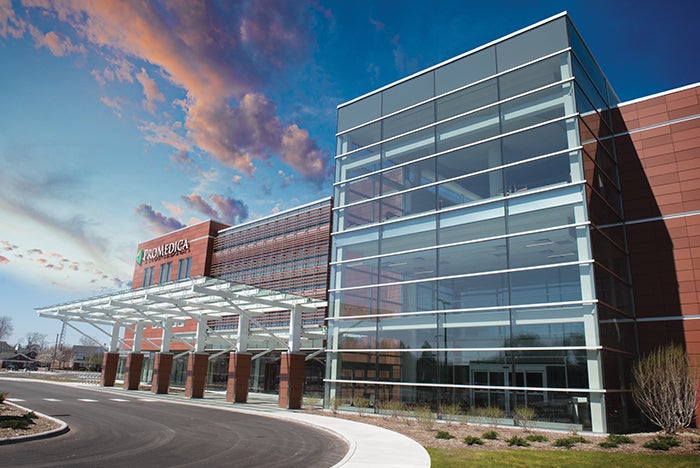Microhospitals offer unique advantage

To keep costs down, all of the health system’s microhospitals have the same design and layout.
Image by Dean Shepard, courtesy of Saint Luke’s Health System
Saint Luke’s Health System in Kansas City, Mo., started building microhospitals so patients with less serious or nonsurgical needs could get faster care more conveniently. In turn, the health system’s higher level emergency departments have increased capacity to care for higher-acuity patients who require access to more specialized services, says Jeremy Bechtel, vice president of facilities and construction.
Regarding why her health system built microhospitals, Peggy Sanborn, senior vice president of strategic partnerships at CommonSpirit Health, based in Chicago, says, “The goal was to create smaller footprint facilities with easier access points and a better patient experience. They are less costly to build than a large hospital, and address 80 to 90 percent of patients’ emergency department needs.”
To keep construction costs down and for operational efficiencies, Bechtel says all of the health system’s microhospitals have the same design and layout. “They are primarily identical, other than meeting specific site requirements,” he says. This has resulted in other benefits as well, such as staff who rotate being able to easily navigate them. This, in turn, results in faster patient flow and care.
Similarly, Sanborn says design plans are replicated and minor tweaks are made to improve efficiency. Emergency department bays are positioned on one side of the building and acute beds are on the other side. A central corridor contains the laboratory, imaging, dietary, supplies and other functional areas shared between the two sides to maximize flow. There’s also a centralized collaboration area for staff. “Patient experience has been very high,” she says. “Natural light and roomier hallways make them more comfortable.”
Microhospitals at Saint Luke’s Health System also feature a central core area that allows physicians, nursing and diagnostic teams to work together and have access to either side of the facility. One side contains the emergency department and exam rooms and the other side is furnished with inpatient beds. “It’s a pretty simple layout with an intuitive flow,” Bechtel says.
One room is specifically designed to be used for behavioral health patients to reduce ligature risks. It has specialized door hardware and plumbing fixtures designed for this environment. Protective covers are placed over grab bars, shower fixtures and lighting fixtures that are typically exposed. “If a patient tried to hook something on to the hardware, it would slide off,” Bechtel says. Garage doors cover up headwalls, which typically contain outlets that could be tampered with, as well as sinks and cabinetry that contain supplies.





